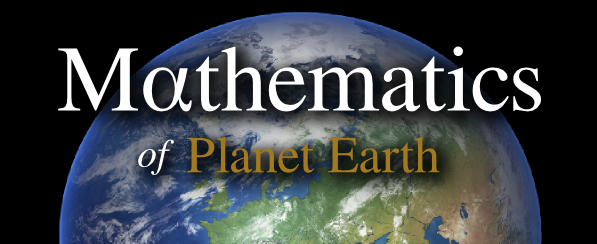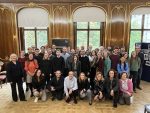MPE CDT Student Cohort 2018
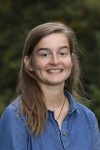
Lily Greig
Based at: University of Reading
Supervisors: David Ferreira (Reading)
Leads are fractures in sea ice. They provide a significant contribution to the polar heat balance despite making up only 5-10% of the sea ice cover, as gradients of sea ice concentration can result in lateral gradients in surface forcing and density gradients in the mixed layer. Through baroclinic instability, these fronts can energise submesoscale eddies. Submesoscale eddies have relatively fast time scales (hours to days), living in a parameter regime with finite Rossby and Richardson numbers. If energised they drive large horizontal exchange between ice-free and ice-covered ocean, and previous work showed that such dynamics could have an order 1 impact on the sea ice melt. Grid scales in the current generation of climate models are greater than the scale of submesoscale eddies and sea ice leads and ignore the effects of the sub-grid scale processes on the net polar heat balance. This project aims to explore these effects. It will start by building a mathematical model to develop understanding of the time and space scales of the density fronts formed under leads. Next it will explore under which conditions the density fronts may become unstable and spawn a submesoscale eddy field. Finally, this project will assess how subsmesoscale dynamics modulate air sea exchanges and if these processes should be included in climate models.

Calvin Nesbitt
Based at: University of Reading
Research project: Response Theory in Multiscale GFD Systems
Supervisors: Valerio Lucarini (Reading), Jeroen Wouters (Reading), Ted Shepherd (Reading)
The investigation of the response of GFD systems to perturbations is a key area of research within the mathematics of climate. Problems as different as the prediction of climate change, the understanding of the coupling between different climatic subsystems, the generation of low-frequency atmospheric variability from high-frequency weather noise, and the construction of parametrizations can be addressed using such a point of view. Multiscale systems feature specific mathematical challenges in the construction of response operators, as a result of the presence of slow decay of correlations for some variables, like the ocean in the case of climate.
Using techniques from ergodic theory and chaos, we will be looking at the response of a multiscale system of geophysical relevance to perturbations in the forcing. Moreover we intend to investigate from both from the point of view of deterministic and stochastic dynamics. For example we aim to use Ruelle Response theory to gain insight in the deterministic case. Additionally, we will look into the properties of multiscale systems. These are topics of great relevance in dynamical systems theory, GFD, and statistical mechanics.
We aim at using the modular MAOOAM climate quasi-geostrophic model, which allows for a great flexibility of configurations and is able to describe both atmospheric and oceanic dynamics in a simplified yet meaningful way. Understanding the geometry of the tangent space is key to the Ruelle formalism and we hope to understand this through the use of covariant Lyapunov vectors. This will allow us to project the response along the stable and unstable directions in the tangent space and so elucidate the applicability of the fluctuation-dissipation theorem. An example of a climatic problem we aim to investigate within this quasi-geostrophic framework would be the coupling between high-frequency, synoptic-scale weather noise and low-frequency, planetary-scale circulation variability. Note this is underpinned by a multiscale asymptotic theory.
This project has strong links with the ongoing debate on state dependent response in the context of climate research. Further areas for exploration would be the construction of unstable periodic orbits for the system and analysis of how they can be used to reconstruct the invariant measure of the system and its response. A third line of investigation deals with the study of the response of the correlations of the fields, rather than observables and the investigation of the nearing to the tipping points

Chiara Cecilia Maiocchi
Based at: University of Reading
Research project: Finding unstable periodic orbits in a chaotic dynamical system using rare events algorithm
Supervisors: Valerio Lucarini (Reading), Andrey Gritsun (Russian Academy of Sciences)
Unstable periodic orbits (UPOs), have been proved to be a relevant mathematical tool in the study of Climate Science. In a recent paper Lucarini and Gritsun provided an alternative approach for understanding the properties of the atmosphere. Climate can be interpreted as a non-equilibrium steady state system and, as such, statistical mechanics can provide us with tools for its study.
UPOs decomposition plays a relevant role in the study of chaotic dynamical system. There is an intrinsic difficulty in sampling UPOs. Newton-like approaches have been proposed in the literature. The issue with these methods is that they are computationally expensive and do not guarantee convergence. During the PhD we would like to develop a new methodology to sample UPOs.
The idea is to populate with trajectories particular areas of interest of the attractor, reducing computational costs at a minimum. Ragone et al. developed a large deviation algorithm to sample rare events in a climate model. An ensemble simulation is performed, where the trajectories start from independent initial conditions that sample the invariant measure of the model. After a fixed time period the simulation is stopped and a score function is associated to each trajectory, depending on the dynamic up to that point. The trajectories that are going towards the region of interest, according to the score function, are copied, and the ones that perform badly are killed. At this stage, the surviving trajectories are slightly perturbed, so that they can evolve differently, and resampling is iterated another time. We believe we could propose a similar approach for sampling UPOs in a climate model. Positive results of UPOs search algorithms can be found in the literature. In particular, Gritsun and Lucarini first implemented this approach in a geophysical setting.
Once computed the UPOs, we would like to use them to reconstruct the invariant measure of the system and study the response of the system to perturbations. A well known result shows that it is possible to evaluate the expectation value of a reference function as an average over the various UPOs, where each one is weighted depending on its instability. The least unstable orbit will have the largest contribution, since it affects more heavily the dynamic of the system. Pollicott and Vytnova provided an alternative decomposition of the average of a reference function in power series, where the coefficient can be computed in terms of periodic points. This decomposition provides a computational more efficient means of approximation. We would like to investigate further this approach on the chosen climate model.
In a first phase of the project the student will familiarise with the mathematical background, working with a simpler model such as Lorenz '96. The main aim will be understanding and applying known methodologies for finding UPOs. Those techniques will then be extended to the more complex model MAOOAM, which has been found to exhibit chaotic behaviour for some values of the parameters. The challenge will be implementing a multiscale approach on this mode, as we have that ocean dynamics and atmosphere dynamics run on completely different time scale. In the last part of the project, the computed UPOs will be used to reconstruct the invariant measure of the system and study its response to external forcing. The innovation in the project is brought by the idea of finding a connection between rare events algorithms literature and UPOs. As far as we know this has never been done.

Niccolò Zagli
Based at: Imperial College London
Research project: Eco-systemic response to climate change
Supervisors: Henrik Jensen (Imperial), G. Pavliotis (Imperial)
The aim of the project is to develop forecasting techniques in order to predict the onset of ecological crises. It is well known that these critical transitions (also known as tipping points) happen in many different areas, from ecological and natural systems to social and political ones. As a parameter is changed, for example the emission of CO2 or the global average temperature, the system becomes more and more unstable, meaning that a small fluctuation can lead it to a different, and usually more disastrous, state.
The project will proceed on two parallel paths. On one hand, since we still lack of a coherent mathematical framework describing these phenomena, we are going to borrow ideas from well-developed theories, such as statistical mechanics, the theory of phase transitions and the theory for fast/slow systems, to construct a solid toolbox to interpret critical transitions.
On the other hand, we are going to investigate methodologies that provide us a way to detect in time series data the onset of a crisis. Some work has already been done in this direction; however, robust data-driven indicators for these critical transitions are still missing. We are going to use the ideas developed in the more theoretical part of the project firstly on simulated data from models and then to real world data sets.

Ollie Street
Based at: Imperial College London
Research project: SPDEs in fluid dynamics and their application to ocean debris
Supervisors: Dan Crisan (Imperial), Darryl Holm (Imperial), Matthew Piggott (Imperial)
The issue of ocean plastics has recently been much discussed by academics, policy makers, and environmental campaigners. The mathematical models which are used to describe the advection of plastics have largely ignored key factors such as sub-grid-scale dynamics and the mass of the debris. This raises the interesting question of how inertial particles move in a fluid governed by a SPDE. Using recent developments in stochastic fluid equations [Holm 2015] as a springboard, we will explore how the introduction of transport noise affects the properties (such as well posedness and smoothness) of a fluid model. In particular, can this type of noise restore uniqueness to a model? Furthermore, we will input the velocity field of the fluid into an equation which will return the velocity of the debris [Maxey & Riley, 1983], exploring the validity of doing this and whether this accurately models reality. Such a model would have applications in predicting the motion of ocean debris (such as icebergs, plastics, or aircraft wreckage) and, considering the model as an inverse problem, calibrating ocean models from drifter buoy data by understanding how the movement of the buoys differs from that of the fluid.

Swinda Falkena
Based at: University of Reading
Research project: Storyline descriptions of climate variability and change
Supervisors: Ted Shepherd (Reading), Jana de Wiljes (Potsdam), Antje Weisheimer (ECMWF)
Predictions of future climate change are usually represented as best estimates with an uncertainty range. However, at the regional scale, changes in atmospheric circulation play a large role and several outcomes may be possible. Under such conditions, an aggregate approach does not provide informative statements about risk. Storylines provide a way to represent the uncertainty in climate change itself, but need to be embedded within a probabilistic framework to account for the uncertainty in the particular realization of climate that will occur.
In this PhD project we use Bayesian causal networks to combine the storyline approach with probability. We focus on atmospheric circulation regimes in the Euro-Atlantic sector, since these have a large influence on the weather over Europe, and study their link with regional changes in extreme events. To inform the derivation of the causal network, expert knowledge will be used, which can be (partially) based on dynamical relationships derived from complex simulation models. The network will incorporate memory effects present in these dynamical relationships, which can give rise to persistent circulation anomalies. This will lead to a stronger physical foundation of the derived causal networks.

Ryo Kurashina
Based at: Imperial College London
Research project: Atlantic-Pacific Decadal Teleconnections in Coupled Ocean-Atmosphere Model
Supervisor: Pavel Berloff (Imperial)
Geostrophic motions flowing over rough topography in the energetic Antarctic circumpolar current are known to be an important source of mixing, through both locally breaking lee waves and non-propagating vortical motions. This project will investigate the impact of these mechanisms on turbulent breakdown near rough bottom topography in order to better understand mixing characteristics in the Southern Ocean.

Oliver Phillips
Based at: University of Reading
Research project: Hybrid numerical-asympotic boundary element methods for multiple scattering problems
Supervisors: Simon Chandler-Wilde (Reading), Chris Westbrook (Reading), Stephen Langdon (Brunel)
Linear wave scattering problems are ubiquitous in science and engineering applications. In the atmosphere, visible and ultraviolet radiation from the sun is scattered by ice crystals in cirrus clouds in the cold upper troposphere. These same clouds also scatter and absorb infrared radiation emitted from the earth's surface and lower troposphere. Together, these effects exert an important influence on the earth's radiation balance, and must be represented correctly in numerical climate models.
There are a number of unresolved problems with computing light scattering from an ice crystal in this regime. Firstly, the size of the ice particle is typically large compared to the wavelength of light illuminating it. This means that conventional numerical methods for such problems are prohibitively expensive. As a result the state-of-the-art in ice cloud radiative transfer is the use of ray-tracing (geometric optics). However, this approach cannot capture the effects of diffraction at the corners and edges of the ice crystal. This is typically overcome via a crude correction after computing the ray-tracing solution, but it is not clear whether this is accurate.
A second unresolved problem lies in the nature of the crystal surfaces themselves. Geometric optics is valid for surfaces which are flat and smooth. Real ice particles often have imperfections (roughness): such as steps, or pits, or in some cases may be rounded lumps. This roughness is in fact one of the leading order controls on the far field scattering pattern, and representing it properly is therefore a high priority. We would like to understand the influence of this roughness from a fundamental level, and therefore better constrain the way it is represented in radiative transfer.
The main tool for investigating these questions is the development of numerical methods for simulating light scattering that are able to capture the effects of diffraction whilst remaining computationally tractable across the frequency spectrum. One promising approach is the development of the class of methods known as "hybrid numerical-asymptotic boundary element methods" (HNABEM), which have been proven to be exceptionally efficient at solving a range of scattering problems, with various boundary conditions and geometries. To date though, the range of geometries for which these methods have been shown to be applicable is insufficient to address realistic questions in atmospheric science. This project aims to develop algorithms closely related to HNABEM yet containing key new ideas that will allow them to be applied to more general scattering problems, and to use these algorithms to investigate questions such as those posed above.
Firstly we will continue previous work on problems of scattering by multiple screens, with a goal being to consider scattering by a rough needle like ice crystals in two dimensions, and to compare qualitative results obtained with similar results for a standard three- dimensional solver so as to understand the potential usefulness of studying related two-dimensional problems. Secondly we will compare results obtained by state of the art approaches for high frequency three dimensional electromagnetic transmission problems in atmospheric physics (e.g., Physical Geometric-Optics Hybrid (PGOH) methods) with those obtained by standard numerical solvers, such as BEM++, so as to understand the significance of the diffraction missed by PGOH, and to develop ideas for approximating this difference via HNABEM.
The EPSRC research area that is of most relevance to the project is Numerical Analysis, with the project focused on the development, analysis and implementation of numerical methods for the solution of problems arising in atmospheric physics.

James Woodfield
Based at: University of Reading
Research project: Advection and Convection for Weather and Climate Models
Supervisors: Hilary Weller (Reading Meteorology), Colin Cotter (Mathematics, Imperial), Christian Kühnlein (ECMWF)
Transport, or advection, is arguably the most important part of an atmospheric prediction model. Everything in the atmosphere is transported by the wind - temperature, pollutants, moisture, clouds and even the wind itself (non-linear advection). Operational weather and climate centres, such as the Met Office and ECMWF, are developing new atmospheric dynamical cores to run on modern computer architectures and they need accurate, efficient and conservative advection schemes that are stable for long time steps suitable for their new models. Their current transport schemes are accurate and stable for long time steps but do not conservative. This project will develop implicit methods to achieve long stable time steps on arbitrary grids of the sphere for linear and non-linear problems. We will start by creating a model for Rayleigh-Benard convection and we will develop a Newton solver to achieve long, stable time steps.

Sam Harrison
Based at: University of Reading
Research project: Morphological instabilities in geophysical flows
Supervisor: Alex Lukyanov (Reading)
Motivation
Deposition and dissolution geomorphic patterns are fundamental in the environment, and understanding the mechanisms underpinning their formation and evolution is central to paleo-reconstruction techniques used to probe past climatological systems. Such problems pose numerous mathematical challenges including motion of free boundaries (wall-shape as well as liquid-air interfaces), fluid-structure interactions and multiscale features in both space and time. The latter can pose particular challenges for lab experiments (for instance features can form over time scales of hundreds of years) and we propose a complete theoretical approach to quantify fundamental physical systems in order to compare with field observations.
Description, Mathematical Problems and Project Work Plan
We will begin with deposition problems and morphological instabilities, termed "crenulations", over calcite surfaces such as stalagmites, and also consider related dissolution problems. The formation mechanism is driven by a liquid film flowing down the structure and carrying slightly supersaturated calcium carbonate that deposits onto the wall. The change in wall-shape affects the flow and the flow affects the shape, albeit at different time scales. The Stokes/Navier-Stokes equations need to be addressed along with the underlying chemistry and surface growth models. We will use mathematical modelling, asymptotic analysis of partial differential equations, and numerical computations to advance the field in several crucial directions not considered previously.
In what follows we provide an overview of some of the mathematics along with an itemised work plan of the proposed thesis:
Realistic geometries: The state-of-the-art consists of modelling the stalagmite as a flat plate with an under-lying liquid film that naturally lead to Rayleigh-Taylor instabilities and absolute-convective transitions. The correct conical geometry is quite different from the flat plate picture.
New mathematical approaches: We will use full 3D axisymmetric geometries and analyse flows over slowly varying conical geometries using a combination of asymptotics and numerical simulations using finite-element and/or finite-volume methods. 3D axisymmetric geometries support waves that are not found in 2D and we propose to fully quantify the impact of such axial non-uniformities on the crenulation patterns. Our theoretical objectives are to analyse the flows in the appropriate geometries encountered in the field.
Novel instability mechanisms: The non-uniform 3D axisymmetric flows (that will be calculated during the project) over tapering conical geometries that are undergoing crenulation modulations are expected to support instabilities that have not been addressed previously. The spatiotemporal fluid structure interaction is expected to support new instabilities that will be analysed and compared with geomorphological features. Both linear and nonlinear analyses will be carried out.
Dissolution flows: A related parallel study of dissolution flows is also proposed. Here the flow sculpts the boundary at a rate that depends on the local fluid shear at the wall, leading to a dynamic fluid-structure interaction that is important in determining the global flow behaviour, for example laminar to turbulent transitions. Several mathematical issues remain to be studied, such as corner formation in dissolution flows past solid objects. In the vicinity of such features we propose to use matched asymptotic expansions in the spirit of triple-deck theory in order to provide the correct regularisation of the singularity and evaluate its effect on the global dynamics.

Tom Gregory
Based at: Imperial College London
Research project: Next generation numerics for global ocean modelling
Supervisors: Colin Cotter (Imperial), David Ham (Imperial)
Building an ocean model using compatible finite element numerics. This will begin with the following steps:
1. extend the linear incompressible nonhydrostatic Boussinesq implicit solver to include free surface (using the combined pressure-free surface approach.
2. Plug this solver into the Gusto modelling system and use existing Gusto advection solvers to construct a semi-implicit nonlinear equation solver loop using the linear Boussinesq solver as the implicit solver step.
At this stage we will have a full numerical scheme for the nonlinear nonhydrostatic incompressible Boussinesq equations and will be able to investigate performance and accuracy through standard test problems.
Going beyond that we could then work on a number of different topics establishing this system as a useable ocean modelling research tool: salinity and equation of state, turbulence closures e.g. Gent-McWilliams, work towards
wind driven baroclinic gyres, representation of bathymetry, parallel scalability, stability over large timesteps, etc. The supervisory team includes a researcher who leads Gusto code development (Shipton) and an external
collaborator who has been using Firedrake to develop a coastal ocean model.

Philipp Breul
Based at: Imperial College London
Research project: What determines the ability of the jet stream to shift in response to external forcing?
Supervisors: Paulo Ceppi (Imperial), Pavel Berloff (Imperial)
A major challenge for climate science is to predict how atmospheric circulation will change as the planet warms. Current climate models generally predict a poleward shift of the midlatitude jet streams and storm tracks with warming. However, the climate science community faces two major difficulties in predicting future jet stream changes. First, the projected jet responses to greenhouse gas forcing are not robust in climate models; second, the dynamical mechanisms responsible for future jet shifts remain uncertain. Taken together, these two obstacles lead to particularly low confidence in climate model projections of jet stream changes.
The approach of my PhD project is to use a hierarchy of general circulation models to better understand the relationship between the initial state of the jet and its response to forcing. At the lowest order of this hierarchy we will use a barotropic model which represents the interaction of Rossby waves with the mean flow. The barotropic model findings will be used to interpret results from more realistic climate models. The model results will be interpreted physically using linear Rossby wave theory.
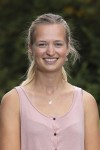
Lois Baker
Based at: Imperial College London
Research project: Transition to turbulence in topographic wave breaking and vortex shedding in the Southern Ocean
Supervisors: Ali Mashayek (Imperial), Graham Hughes (Imperial)
It is an emerging picture that deep ocean turbulence exerts a control over the climate system through regulating the oceanic uptake and redistribution of heat, carbon, nutrients and other tracers. Observations of such turbulence, and our ability to model it numerically, however, have been limited if non-existent until very recently. The challenge ahead is to understand physics of such turbulence to help represent them properly in climate models that are coarse resolution, hence incapable of resolving such processes.
The aim of this project is to better quantify the energy pathways from the mean geostrophic flow to dissipation and mixing through interactions with bottom topography, first through the generation of overturning lee waves above ridge-like topography and later through the generation of lee vortices at seamounts. Recent realistic and high resolution simulations of the Drake Passage provide an invaluable case study of flow topography interactions in an energetic and dynamically relevant area of the Southern Ocean. We will isolate these key processes from the simulations, analyse them for their contribution to energy pathways in the Southern Ocean, and create theoretical frameworks in order to enable better parametrisation of the processes in coarse resolution models.
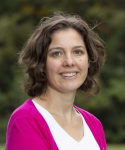
Cathie Wells
Based at: University of Reading
Research project: Reformulating aircraft routing algorithms to improve flight routes
Supervisors: Paul Williams (Reading), Nancy Nichols (Reading), Ian Poll (Poll AeroSciences Ltd)
Air travel is the subject of much current controversy. Statistics for fuel use and CO2 emissions make uncomfortable reading for both airlines and environmental groups. Today’s flight routes avoid areas of strong headwinds and make use of available tailwinds, for a set optimal low fuel burn air speed. During the MRes phase of the project, however, it was shown that these trajectories do not always minimise fuel burn.
Airlines are keen to be able to provide a timetable that is unaffected by a particularly strong wind field. Delays are costly and early arrival can often result in extra fuel burn due to holding patterns. This PhD project will find optimal routes to minimise fuel burn for set departure and arrival times. Varying both airspeed and altitude, whilst considering the expected background wind field and the change in aircraft mass due to fuel burn, will provide a realistic model for the cruise phase of transatlantic flights.
Using Optimal Control theory, the dynamical system of routing equations derived in each situation can be solved numerically. The fuel burn statistics from the model can then be compared with recent actual flight data and recommendations made to the airline industry.
Lead supervisor: Paul Williams (Reading)
Co-supervisors: Dante Kalise (Imperial) and Nancy Nichols (Reading) Industrial co-supervisor: Ian Poll (Poll AeroSciences Ltd)



